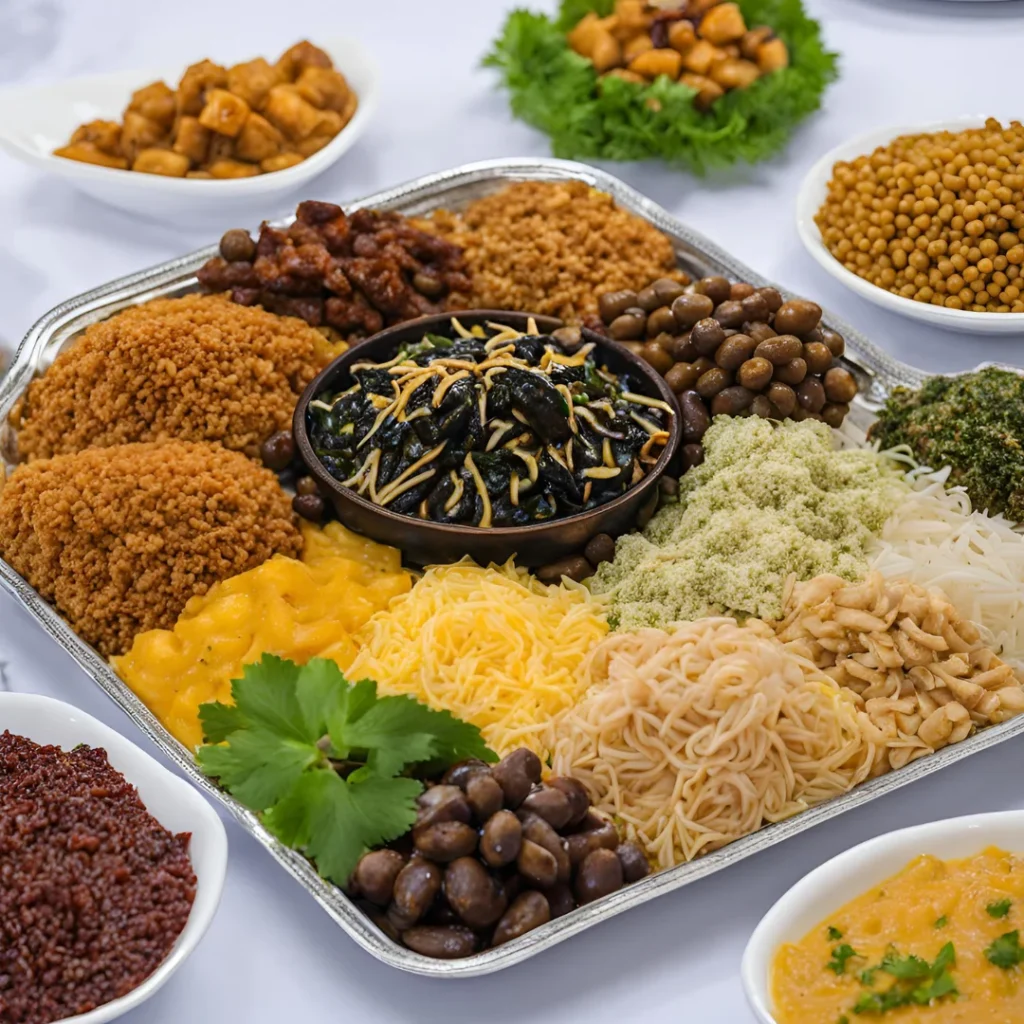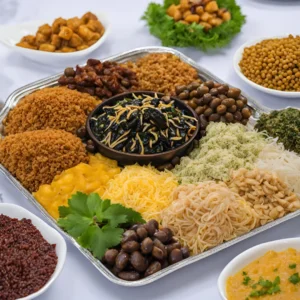
Table of contents
Engaging Introduction
Have you ever wondered if the flavors of Saudi Arabic food are as good for your body as they are for your taste buds? Many people assume Middle Eastern cuisine is heavy and unhealthy, but that’s not always true. Today, we’re diving deep into the world of Saudi Arabic food to uncover its hidden health benefits. Are you ready to learn how delicious and nutritious this culinary tradition can be?
Overview
Saudi Arabic food is special because it combines fresh ingredients with centuries-old cooking techniques. Most recipes require about 45 minutes to prepare, making them perfect for busy weeknights or weekend gatherings. The difficulty level ranges from beginner-friendly to intermediate, so whether you’re a seasoned chef or just starting out, there’s something for everyone.
Essential Ingredients
To make authentic Saudi Arabic dishes, here are some key ingredients you’ll need:
- Tamees (Wheat Bread): This flatbread is rich in complex carbohydrates and fiber, providing lasting energy without added sugars [[7]].
- Rice: A staple in many meals, rice offers essential nutrients like magnesium and B vitamins.
- Lean Meats: Chicken, lamb, or beef are often used in moderation, ensuring protein without excessive fat.
- Spices & Herbs: Cumin, turmeric, cardamom, and saffron add flavor while boosting antioxidant levels.
- Vegetables: Carrots, tomatoes, and onions provide vitamins, minerals, and natural sweetness.
Substitutions and Variations:
- Swap tamees for whole-grain pita bread if unavailable.
- Use quinoa instead of rice for a gluten-free option.
- Opt for plant-based proteins like chickpeas or lentils for vegetarian versions.
Step-by-Step Instructions: Making Al Kabsa
Let’s walk through one of the most famous Saudi Arabic dishes—Al Kabsa. It’s hearty, flavorful, and packed with goodness!
- Prepare Your Ingredients: Gather chicken, basmati rice, spices, vegetables, and aromatics.
- Cook the Aromatics: In a large pot, melt butter over medium heat. Add diced onions and cook until golden brown. Stir in minced garlic and ginger for extra depth.
- Brown the Protein: Season chicken pieces with salt, pepper, and ground cumin. Sear them in the pot until golden on all sides.
- Simmer the Sauce: Pour in chicken broth, along with diced tomatoes, grated carrots, and spices like turmeric, cardamom, and cloves. Bring to a boil, then reduce heat and let simmer for 20 minutes.
- Add Rice: Gently stir in rinsed basmati rice, ensuring it’s fully submerged in the liquid. Cover the pot and cook for another 15–20 minutes, or until the rice is tender.
Tip: For an aromatic finish, scatter saffron threads over the rice before covering.
Assembly
Once everything is cooked, fluff the rice with a fork and arrange it on a large serving platter. Place the chicken pieces on top and garnish with toasted almonds or raisins for added crunch and sweetness. Serve alongside fresh salads or yogurt dips for a balanced meal.
For presentation tips:
- Use colorful garnishes like parsley or pomegranate seeds.
- Arrange the dish in layers for visual appeal.
- Pair with side dishes like tabbouleh or cucumber salad.
Storage and Make-Ahead Tips
Leftovers can be stored in an airtight container in the refrigerator for up to four days. To reheat, place the dish in a microwave-safe bowl with a splash of water to prevent drying out. Alternatively, freeze portions for up to three months; thaw overnight in the fridge before reheating.
Recipe Variations
Feel free to get creative with these variations:
- Add more veggies like zucchini or green beans for extra nutrition.
- Substitute chicken with shrimp or fish for a seafood twist.
- Experiment with different spice blends, such as harissa or baharat, for unique flavors.
Conclusion
Saudi Arabic food isn’t just about bold flavors—it’s also about nourishing your body with wholesome ingredients. From the fiber-rich tamees to the nutrient-packed al kabsa, these dishes prove that healthy eating doesn’t have to be boring. So why not give them a try? Your taste buds—and your body—will thank you!
FAQs
Q: Is Saudi Arabic food generally considered healthy?
A: Yes! Many traditional dishes focus on lean proteins, whole grains, and plenty of vegetables, offering numerous health benefits.
Q: What are the main health benefits of eating Saudi Arabic food?
A: You’ll enjoy improved digestion thanks to high-fiber foods, better heart health from unsaturated fats, and boosted immunity from vitamin-rich ingredients.
Q: Can I make these recipes ahead of time?
A: Absolutely! Most dishes can be prepared in advance and reheated easily, saving you time during busy weeks.
So go ahead, explore the vibrant world of Saudi Arabic food, and discover how easy it is to eat well while enjoying every bite!

